Lighting
A sense of dynamism, energy and movement can be captured through the combination of different types of lighting. Lighting can also help guide users to specific behaviors. Whenever possible, use natural lighting to convey warmth and a connection to nature.
Application diagram demo
Lighting application varies by intended use of the space. Natural daylight can connect interiors to the wider world. Thoughtful lighting can be assistive or dramatic, depending on the zone. Study the diagram and table here for more information on typical use cases by lighting type.
| Type | Usage |
|---|---|
| Indirect linear pendant | This pendant type can be used in medium and large enclosed collaboration areas, such as training rooms and print labs, to create a productive work environment for group collaboration. |
| Recessed linear wall washer | Small individual enclosed rooms make great use of the recessed linear wall washer. Use these fixtures to create a comfortable work environment where focused work takes place. |
| Direct or indirect linear pendant | Direct or indirect linear pendants should be used in large and medium open areas where individual and collaborative work takes place. They can be used in corridors to light the way for primary and secondary circulation paths. Linear pendants can also be used as support light fixtures in small enclosed rooms, such as individual offices and focused collaboration spaces. |
| Spot downlight | Spot downlights should be used in corridors to light the way for primary and secondary circulation paths. They can also be used as supporting light fixtures in small enclosed rooms, such as individual offices and focused collaboration spaces. |
| Medium geometric pendant | Medium geometric pendants should be used in small and medium enclosed collaboration rooms and individual enclosed rooms, such as restrooms and mother’s rooms, in combination with spot downlights as a small accent light. |
| Large geometric pendant | Large geometric pendants should be used in medium and large open collaboration spaces, cafés and large enclosed collaboration spaces as the accent lighting for all community settings or informal conversation. |
| Core area lighting | Core area lighting falls within the purview of landlord specification. |
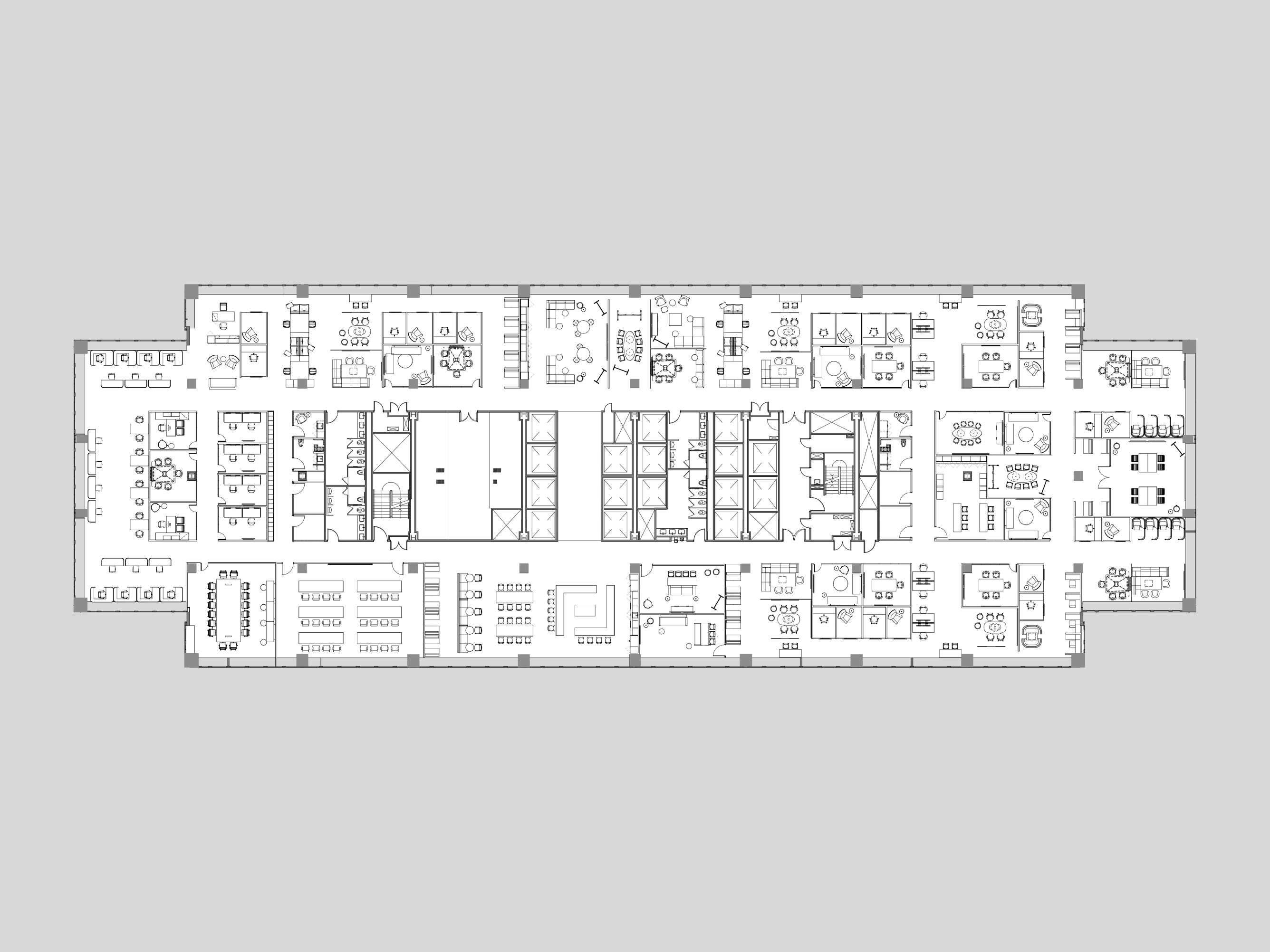
Fixtures
Fixtures should be simple in shape and detailing to convey a contemporary, modern aesthetic. All fixtures should be lensed to produce a soft, diffused light and glow.
Use a neutral palette of white, gray and silver. Avoid using accent colors in lighting fixtures.
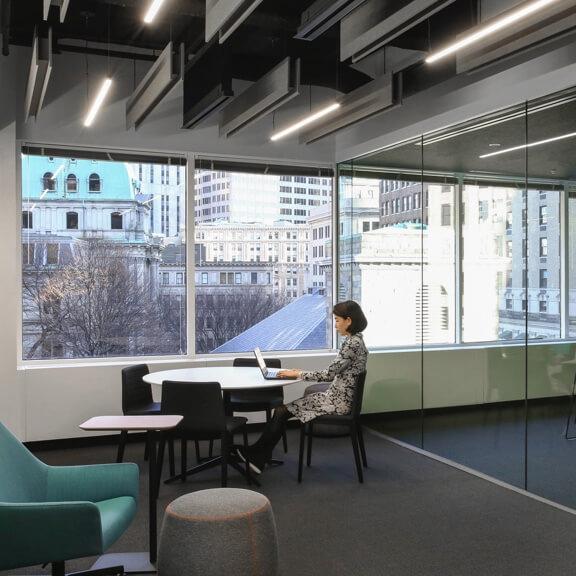

One hallmark of IBM interiors is linear lights, used in open ceiling areas.


Cove lights provide architectural emphasis.
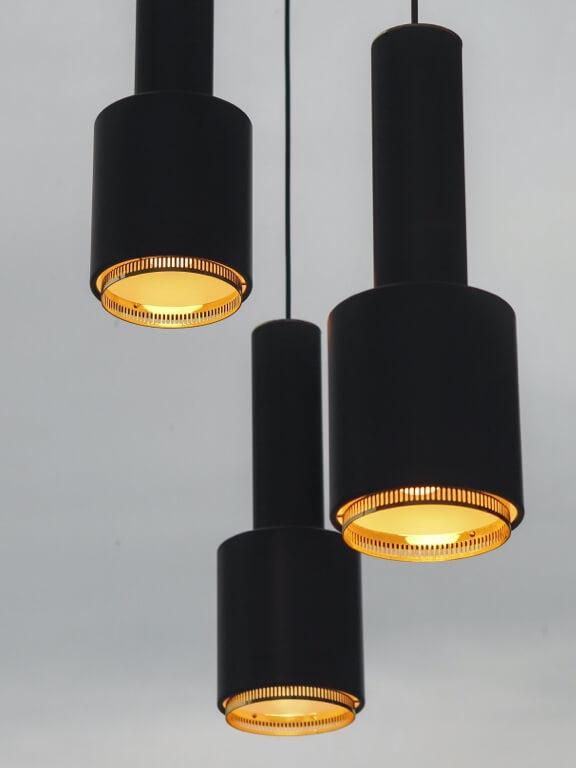
Choose modern, geometric pendants.

Zone lighting
Each zone serves a different purpose, and the lighting choices should reflect the purpose of the zone.
Welcome and Community zones
Welcome and Community zone lighting should complement and integrate with the specialty ceiling elements in each zone. Whether linear or downlights, light should be lensed, soft and diffused.
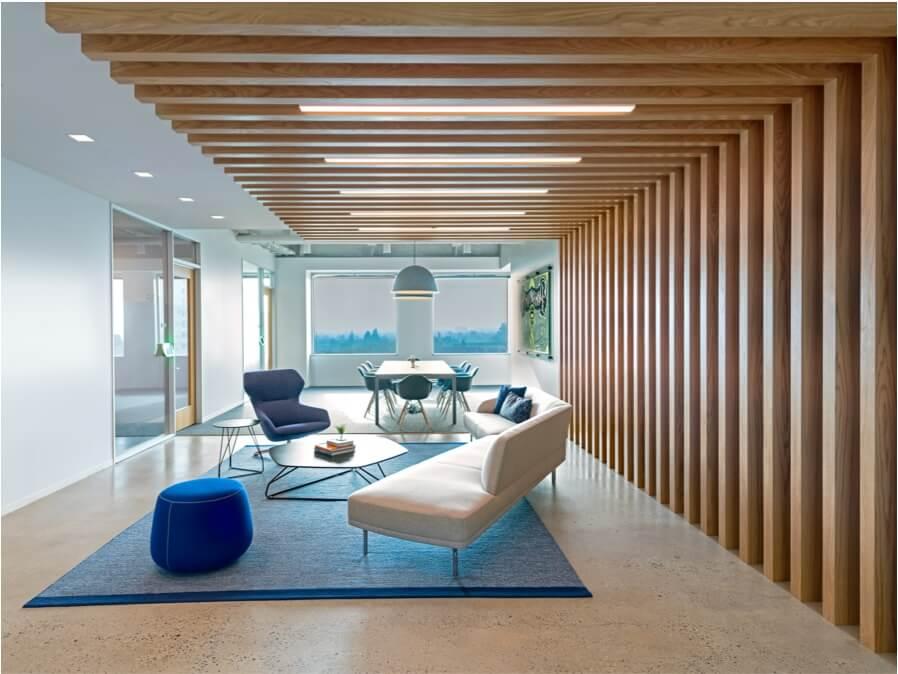
A walkway gets subtle definition with spot lighting.

Community activation
The lighting in the Community zone should complement and integrate with the specialty ceiling elements employed in this zone. A combination of lensed linear fixtures and downlights can be used. Decorative pendants should be suspended over the bar-height counter.
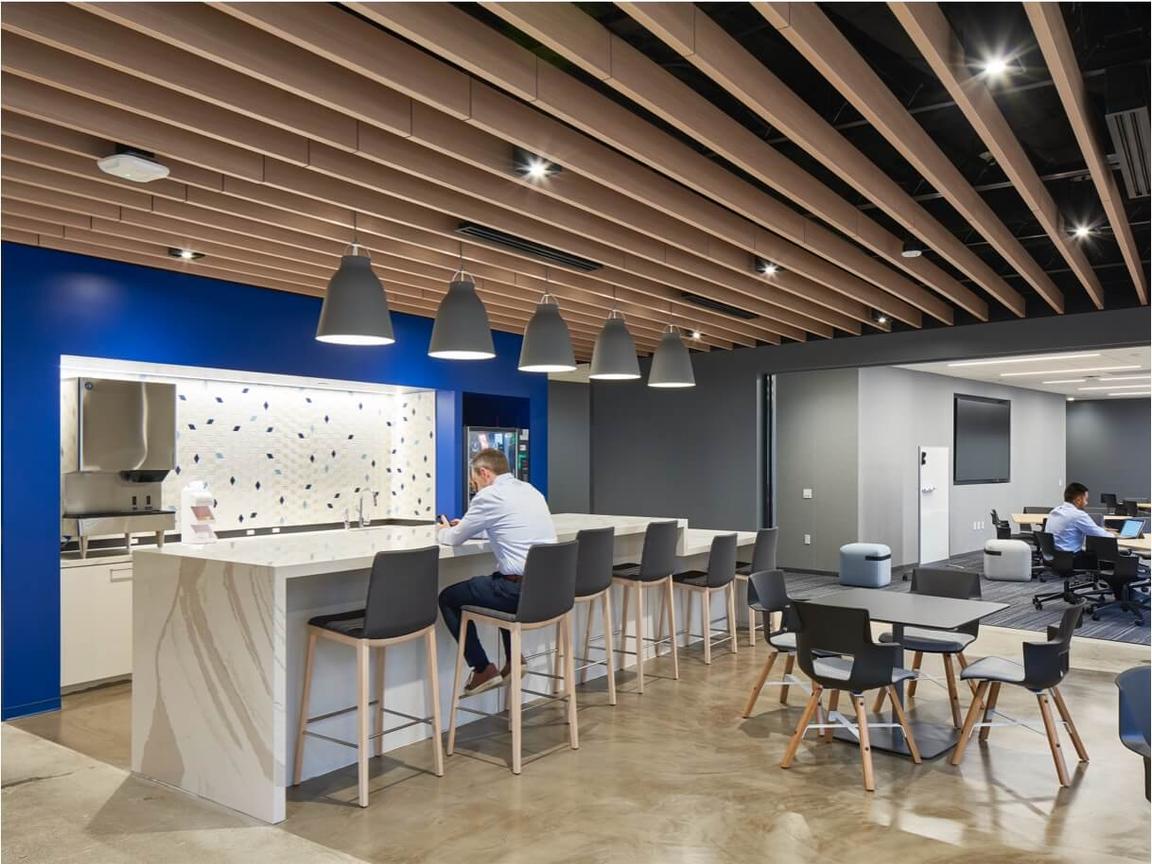
Downlights provide low-profile general light, while pendants brighten the countertop.

Co-creation zones
An open Collaborate zone can be differentiated by using a single, large, decorative pendant over the collaboration grouping. Differentiate a stand-up Collaborate zone with two or three small decorative pendants positioned over the stand-up table.
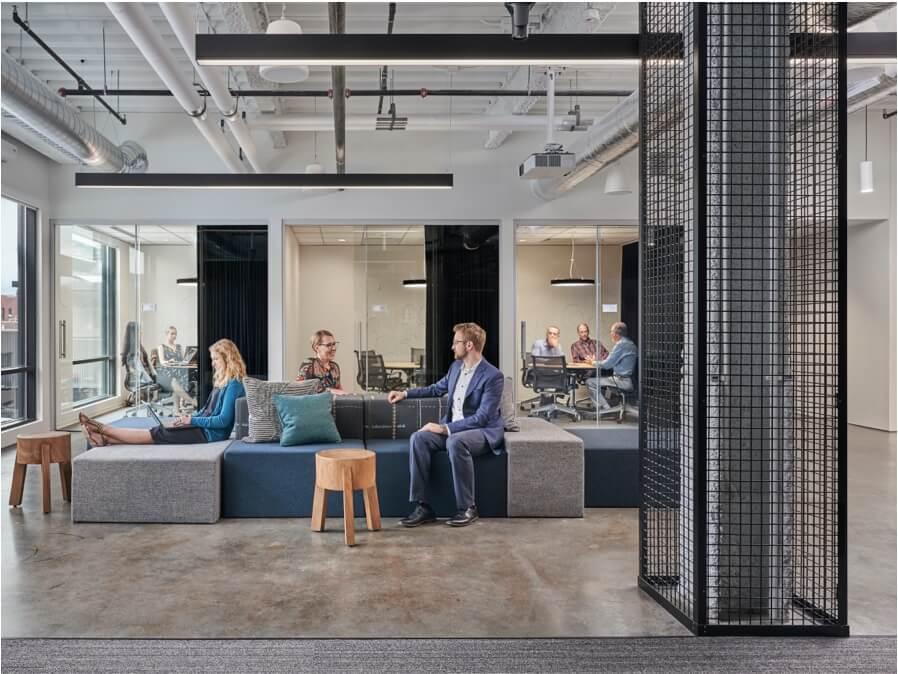
Linear lights define this relaxed seating area.
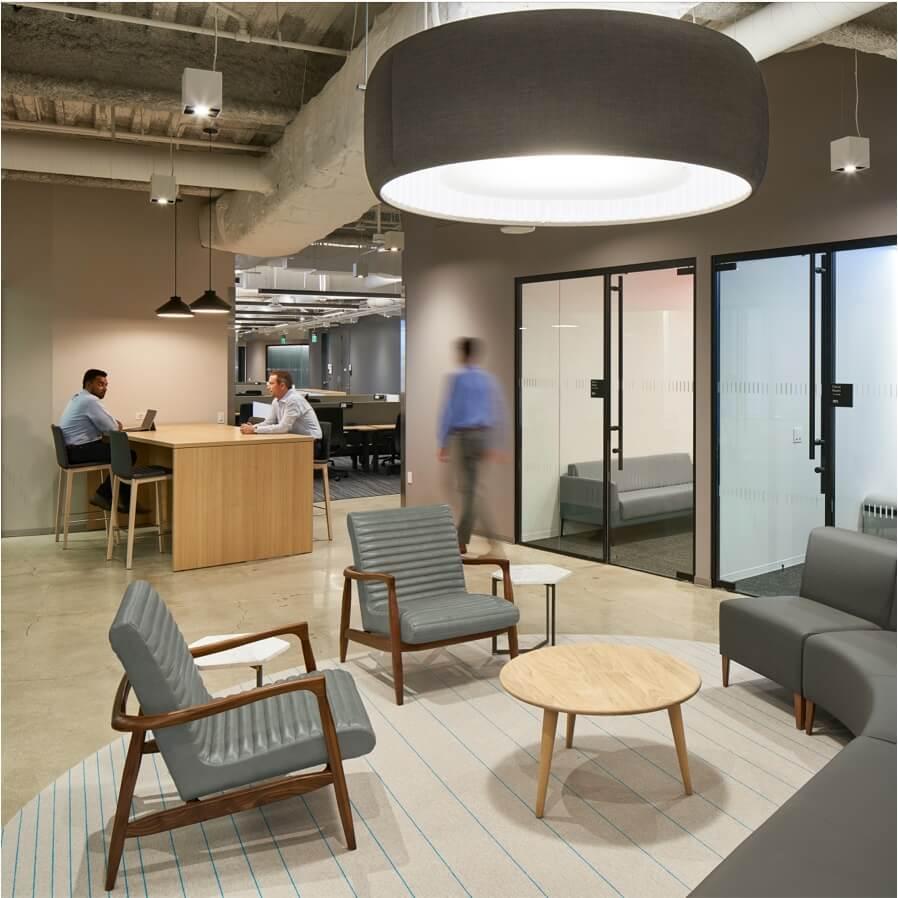
Choose pendants that suit each zone’s purpose.
Focus
The atmosphere of an enclosed meeting or Focus zone works best with a recessed, lensed, linear fixture. The accent wall should be highlighted with a continuous lensed, linear fixture.
An open workplace Focus zone typically uses lensed linear fixtures. Fixture layout should be orderly, rhythmic and based on the 2x Grid. Variations in layout are permissible as long as foot-candle requirements are met at the work surface.
If an open workplace Focus zone includes library tables, use two or three small, decorative pendants positioned over them.
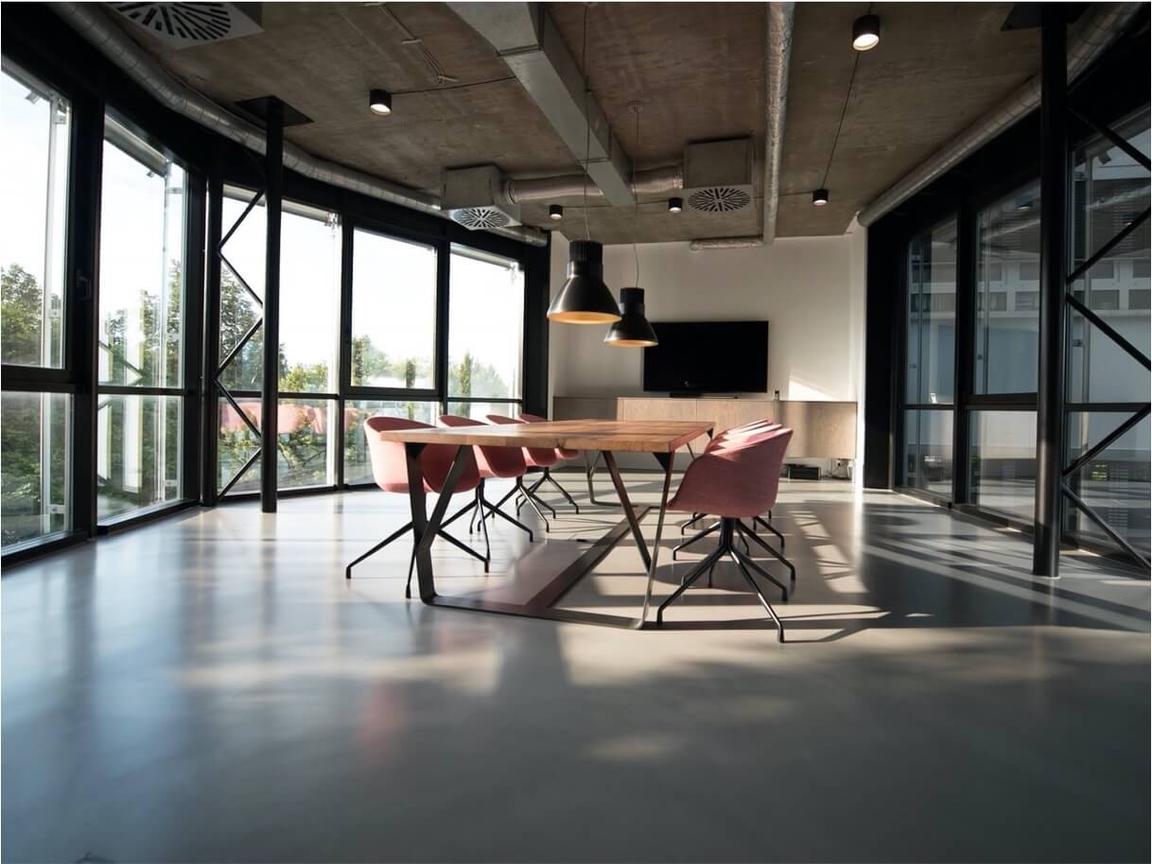
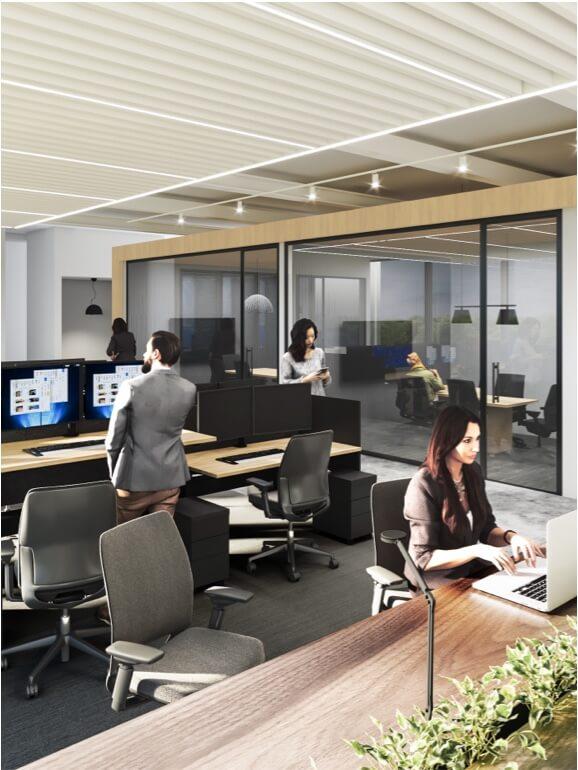
Linear lights echo the ceiling grid.
Sustainability and wellness recommendations
LEED and WELL:
- WELL Precondition L02 Visual Lighting Design requires that all indoor and outdoor lighting complies with one of its stipulated reference guidelines. See the precondition’s language for more detailed information.
- WELL’s Materials Precondition X01 restrictions recommend specifying fluorescent and sodium lamps that are Restriction of Hazardous Substances in Electrical and Electronic Equipment (RoHS) compliant when not specifying LED fixtures.
- LEED credit EQc6 and WELL features L08 and L09 require projects to provide quality lighting and lighting controls to occupants. Topics included in their criteria are flicker management, color rendering index, access to supplemental lighting, surface reflectance and the rated life of lighting products.
- Consider pursuing 0ption 1 for EQc6 for projects in which the lighting strategy includes task lighting.
- When pursuing option 2 independently or in addition to option 1 for EQc6, consider strategies A-D, which relate to luminance, color rendering index (CRI), rated life and indirect lighting.
- Refer to IBM’s technical appendix for requirements related to lighting power density, and LEED and WELL requirements related to lighting fixture selection.
Additional recommendations:
- Avoid specifying products that are not serviceable or constructed in a way that restricts end-of-life materials reuse, which can include reliance on adhesives, embedded bulbs or nonrecyclable materials, such as plastic.

